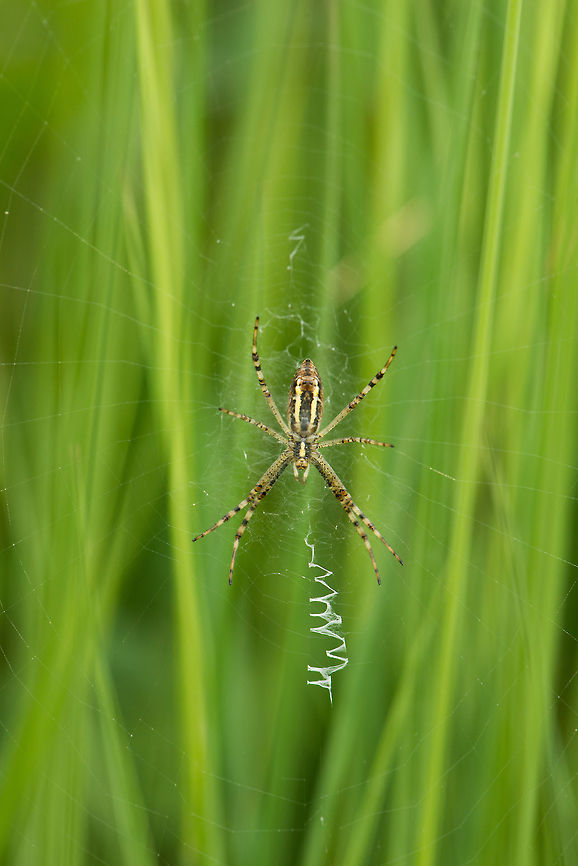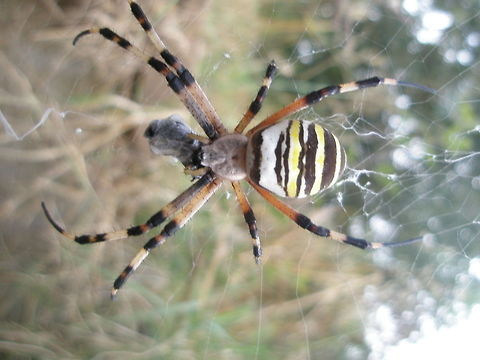
Wasp spider with stabilimentum in Netherlands
It took me a while to identify this as a wasp spider, for the simple reason that almost all reference photos show the top side of the spider, whilst this photo shows the bottom of the spider. Silly me.
I've been wondering before what the zig-zag pattern is in the web, so I did some research. It's called a "stabilimentum":
http://en.wikipedia.org/wiki/Web_decoration
The reason for it is disputed, it may be for camouflage or to warn birds, nobody knows for sure. What blows my mind from that article is that this behavior has evolved as much as 9 times independently. So it seems that evolution repeatedly evolves to include this particular behavior as an answer to some need, yet we do not know the need.

"Argiope bruennichi", or the wasp spider, is a species of orb-web spider distributed throughout central Europe, Northern Europe, north Africa and parts of Asia. Like many other members of the genus "Argiope", it shows striking yellow and black markings on its abdomen.
